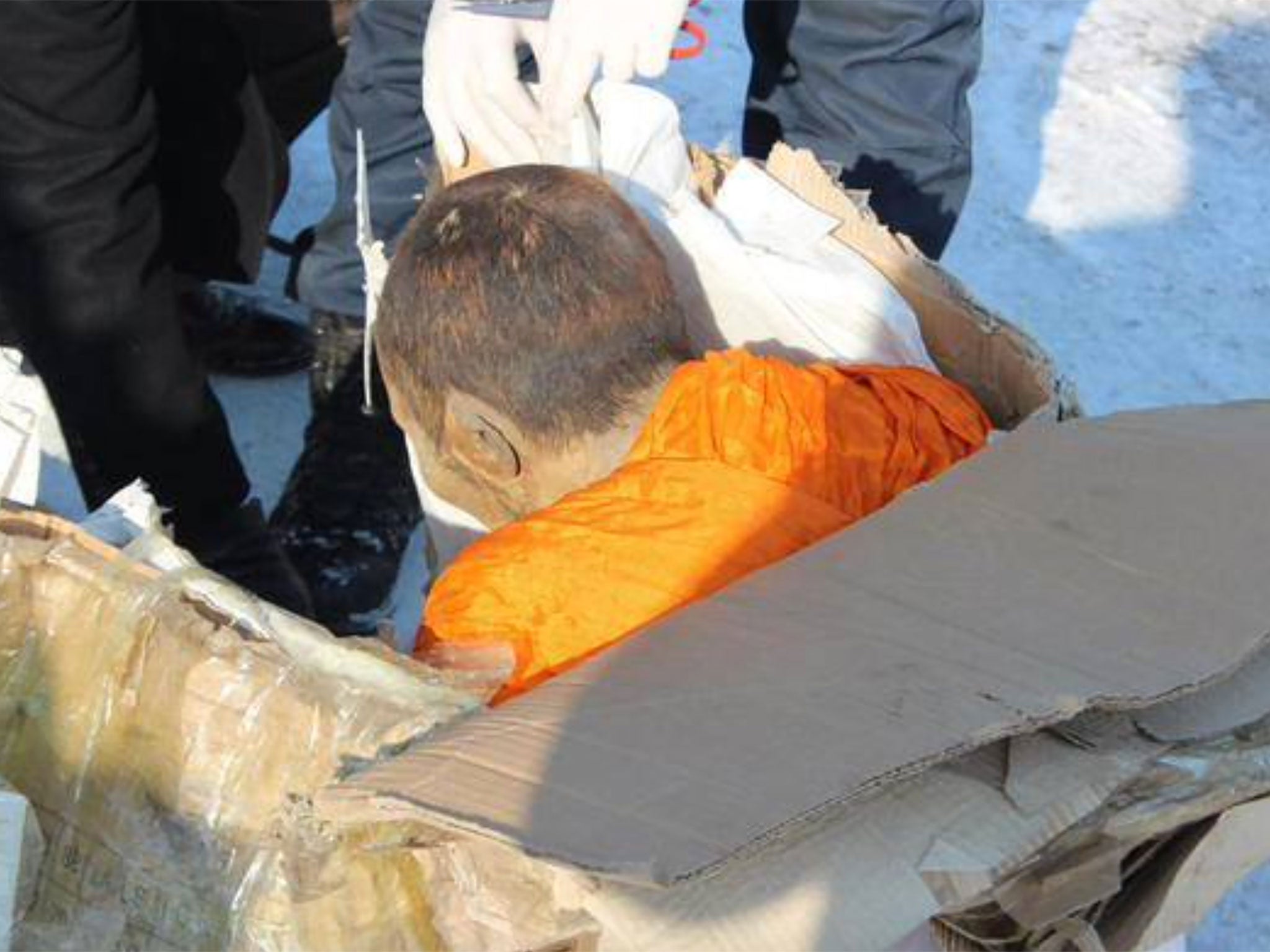Mummified 200-year-old monk found in Mongolia in 'very deep meditation', Buddhist academic claims
Preserved body was discovered in the lotus position, covered in animal hide, last week in the Songinokhairkhan district

Your support helps us to tell the story
From reproductive rights to climate change to Big Tech, The Independent is on the ground when the story is developing. Whether it's investigating the financials of Elon Musk's pro-Trump PAC or producing our latest documentary, 'The A Word', which shines a light on the American women fighting for reproductive rights, we know how important it is to parse out the facts from the messaging.
At such a critical moment in US history, we need reporters on the ground. Your donation allows us to keep sending journalists to speak to both sides of the story.
The Independent is trusted by Americans across the entire political spectrum. And unlike many other quality news outlets, we choose not to lock Americans out of our reporting and analysis with paywalls. We believe quality journalism should be available to everyone, paid for by those who can afford it.
Your support makes all the difference.A Buddhist academic has said a 200-year-old mummified monk discovered in Mongolia may not be dead but in a "very deep meditation".
The preserved body was discovered in the lotus position, covered in animal hide, last week in the Songinokhairkhan district, close to the Mongolian capital Ulaanbaatar.
Forensic examinations are being carried out on the remains, which investigators believe belong to a man who may have been a Lama, or a teacher of Tibetan Buddhism.
Now, an expert has claimed the monk may have been in a rare spiritual state known as "tukdam".
Ganhugiyn Purevbata, founder and professor of the Mongolian Institute of Buddhist Art at Ulaanbaatar Buddhist University, told The Siberian Times: "Lama is sitting in the lotus position vajra, the left hand is opened, and the right hand symbolizes of the preaching Sutra.
"This is a sign that the Lama is not dead, but is in a very deep meditation according to the ancient tradition of Buddhist lamas."
The mummified remains have reportedly been taken for examination at the Ulaanbataar National Centre of Forensic Expertise, according to The Telegraph.

It has been suggested the mummified monk was a teacher of the Buryat Buddhist Lama Dashi-Dorzho Itigilov, who was born in 1852, and was reported to have died in 1927 while meditating.
When his body was examined by Buddhist monks in 1955 and again in 1973, Itigilov apparently remained in the lotus position and his body did not appear to show signs of decay.
It is understood the body was reburied in a coffin packed with salt and left until 2002 when it was once again exhumed, 75 years after Itigilov's death.
According to a 2002 report in the The New York Times, a dozen witnesses were on hand to see the body had remained preserved.
Vladislav L. Kozeltsev, an expert at the Centre for Biomedical Technologies, told the paper the preservation of the body may have been due to a defect in a gene in Itigilov's body which hastened the decomposition of cells after death.
He said while the salt in the coffin may have played a part in slowing decay, other factors may have included the soil and the coffin's condition, adding the possibility of "some secret process of embalming" could not be ruled out.
Join our commenting forum
Join thought-provoking conversations, follow other Independent readers and see their replies
Comments